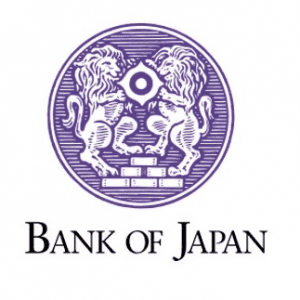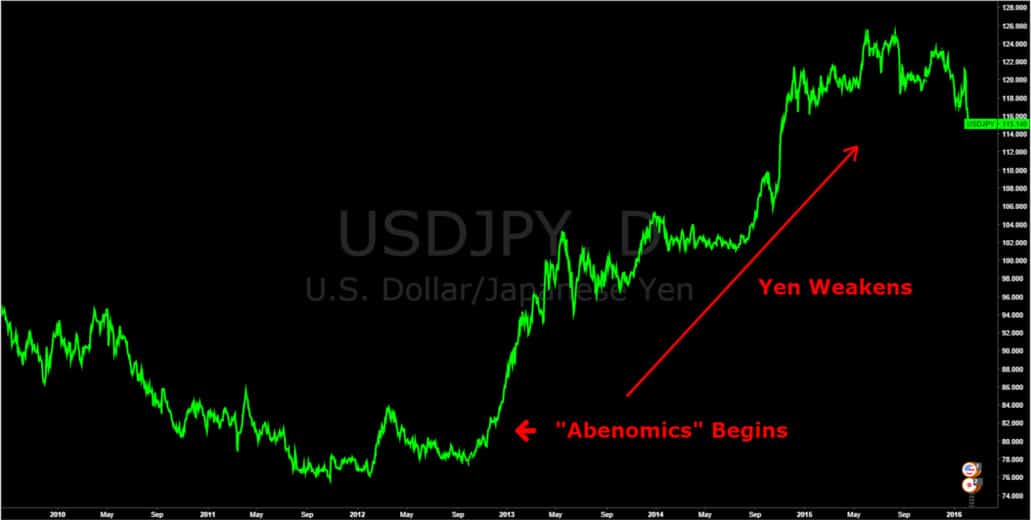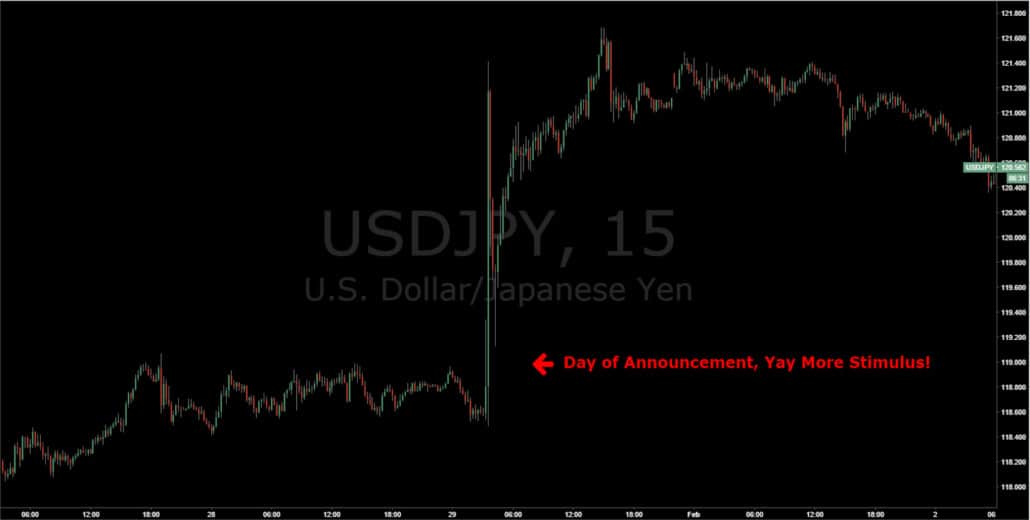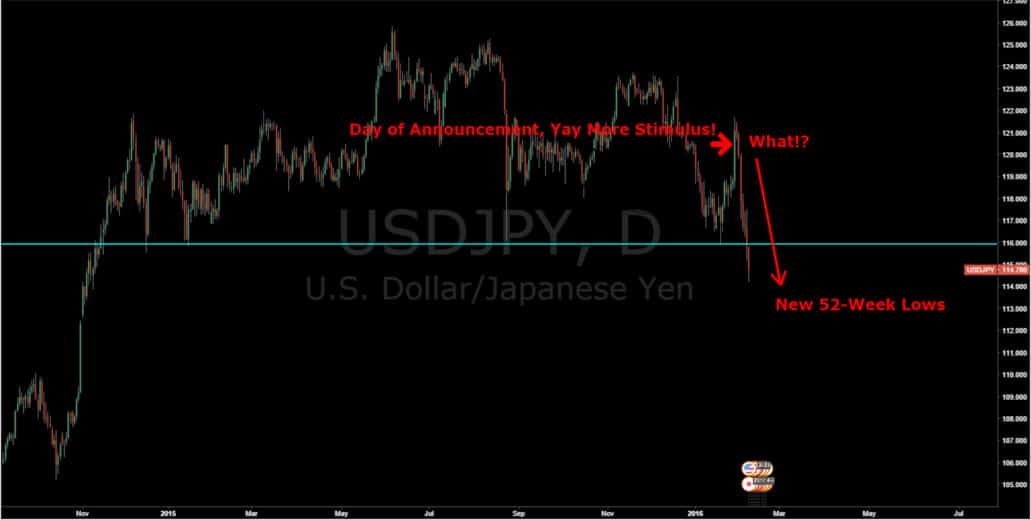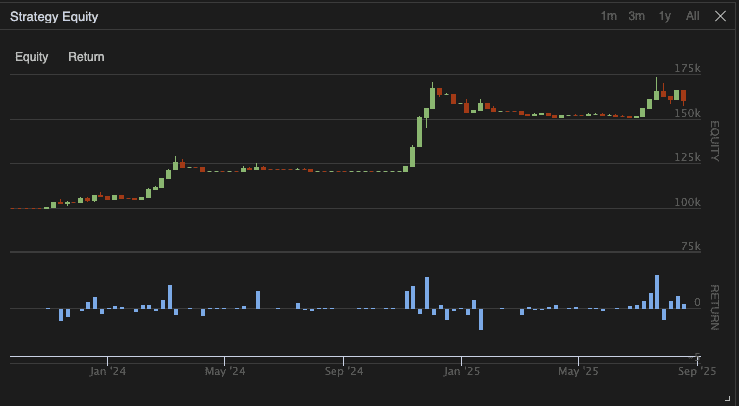If you want to be successful in the markets, you need to pay close attention to inflection points. Correctly evaluating an inflection point is the key to understanding market sentiment. And once you understand market sentiment, you’ll be able to determine which way an asset will trend.
An inflection point is a critical juncture in an asset’s price. It’s a sort of crossroads, where after a big fundamental piece of news is released, the price takes off in either direction.
For example, say a high-growth tech company that’s been one of the best performers over the past few years is now reporting earnings. The company ends up releasing great earnings, but its stock price plummets the next day. This negative price reaction can be taken as a signal that investors were disappointed. Their expectations were not met, and the company’s share price suffered as a result.
The price reaction to earnings revealed the change in sentiment towards the company. This tech company had been a true high-flyer before this latest earnings report. But after the release, the stock was punished, and all because earnings underwhelmed. The change in sentiment likely signals the start of a new trend for the stock. And in this case, that new trend is most probably downward. The earnings report and subsequent price action combine to form a key inflection point that lets us determine the new sentiment and trend. This helps us stay on the right side of the trade.
Foundation Investing recently identified a HUGE inflection point in the dollar yen cross rate (USDJPY). This occurred after the Bank of Japan’s (BOJ) negative rate announcement on Jan. 29th. In global markets, central bank policies largely dictate capital flows. So we make sure to listen closely when the big boys talk.
The USDJPY narrative started back in late 2012. Newly elected Prime Minister Shinzo Abe immediately implemented his economic stimulus plan “Abenomics” to reinvigorate the Japanese economy. A big part of this plan involved monetary easing on behalf of the BOJ. And so the central bank started printing money like mad to buy financial assets. This caused the yen to dramatically weaken against the US dollar.
The stimulus plan worked for a bit. The Nikkei had a huge bull market run from 2013 to 2014. But in 2015, things changed. The market stopped making new highs, inflation dropped like a rock, and the global deflationary slowdown began. The stimulus planned failed to spur any further substantial growth for the entirety of 2015. In response, the BOJ announced Negative Interest Rate Policy (NIRP) on Jan. 29th, 2016 for the first time ever.
Negative interest rates force banks who deposit funds with the BOJ to PAY to keep them there (crazy right?). This is supposed to incentivize them to loan their money out instead of hoarding it, thereby creating a stimulative effect on the economy.
So what happened after the announcement? By traditional logic we would expect USDJPY to rally, which means a stronger dollar and a weaker yen. NIRP weakens a currency because investors are more likely to sell off assets that give them negative returns. With negative interest rates, the yen becomes ones of those assets. This would result in a lot of selling pressure on the yen, lowering its value. We expected to see this play out in the dollar yen cross rate. And at first impulse, that’s exactly what we got. Pictured below is an intraday chart of USDJPY. You can see a massive spike on the day of the announcement signaling a weaker yen.
But look what happened a few days after the event…daily chart this time. USDJPY fell hard. The yen strengthened again.
This is what we call an inflection point. Key fundamental information (BOJ announcement) resulted in a counter-intuitive move in price. And not just a small one either. We would consider a small move just noise. But a large aggressive sell to new 52-week lows screams “inflection” loud and clear.
With this move, we believe the market is telling central bankers around the world that they don’t believe in stimulus anymore. The jig is up. The period of central bank manipulation has come to an end. Faith in the system has been lost.
It makes sense. The positive effects of stimulus had to end sooner or later. As more stimulus was pumped into the system, it had less and less of an effect. Think of a drug addict who constantly needs a larger and more potent fix to feel the same way he did on day one.
In financial markets we call this “pushing on a string.” This occurs when monetary policy can no longer entice consumers and businesses to spend or invest. At a certain point the economy becomes so weak that people are barely willing to take out loans and spend, despite rock bottom interest rates.
If we’re correct about this inflection point, equity markets around the world are due for a tumultuous year. It’ll be real tough for prices to rise without an “easy money” propellant working in their favor. The central bank backstop has been removed and there is a lot of room for these markets to fall. It would be dangerous to go long at this point. There might only be one thing that can rally in this environment. And that’s bonds. US treasuries will be the best place to invest to weather the coming storm.

